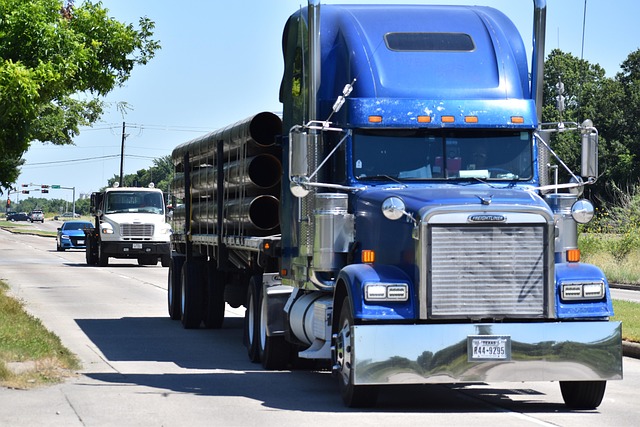Looking to register your car in California? Our comprehensive guide breaks down the process step-by-step, from understanding crucial requirements like proper insurance and emissions testing, to gathering essential documents including a title and VIN verifier. We’ll walk you through determining taxes and fees, visiting a DMV office, and completing registration online or in-person for a smooth, efficient experience.
- Understand California Car Registration Requirements
- Gather Necessary Documents for Car Registration
- Determine Your Vehicle's Tax and Fees
- Visit a California Department of Motor Vehicles (DMV) Office
- Complete the Car Registration Process Online or In-Person
Understand California Car Registration Requirements

Before registering your car in California, it’s crucial to understand the state’s specific requirements for vehicle identification number (VIN) verification and documentation. The process involves ensuring that your vehicle meets all safety and emissions standards set by the California Department of Motor Vehicles (DMV). One essential step is obtaining a valid VIN inspection or verification report, which can be done through various methods.
A common option is to utilize mobile VIN inspection services that provide on-site verifications, offering convenience and time-saving benefits. These services use advanced technology to cross-reference your vehicle’s VIN with state databases, ensuring its authenticity and compliance. Alternatively, you can visit a local DMV office for a traditional VIN inspection or obtain a registration package from the agency, which includes necessary forms and guidelines for documentation.
Gather Necessary Documents for Car Registration

Before you start the registration process, ensure you have all the required documents. The California Department of Motor Vehicles (DMV) will need your vehicle’s Vehicle Identification Number (VIN), which can be found on the vehicle’s title or registration certificate if it’s available. For older vehicles or those without titles, a VIN verifier is essential to obtain this unique code. Utilize a reliable mobile vin verifier to quickly and accurately capture the VIN, making the initial step in car registration efficient.
Additionally, gather important paperwork like proof of insurance, a valid driver’s license, and any applicable fees. Remember, some documents may need to be presented in-person at your local DMV office, while others can be submitted online or by mail, depending on your preference and the specific requirements for your vehicle.
Determine Your Vehicle's Tax and Fees

Before registering your car in California, it’s crucial to understand the tax and fees involved. One essential step is to conduct a VIN inspection to gather all necessary information about your vehicle. Utilize a mobile VIN verifier or mobile VIN verification service to access detailed data linked to your car’s unique Vehicle Identification Number (VIN). This process ensures accuracy in calculating the correct taxes, fees, and registration costs.
By employing a mobile VIN inspection, you can determine various factors that influence registration, such as age, make, model, and emissions standards. These details are vital for assessing the appropriate tax rates and surcharges applicable to your vehicle in California.
Visit a California Department of Motor Vehicles (DMV) Office

To initiate the car registration process in California, the first step is to visit a local California Department of Motor Vehicles (DMV) office. This is where you’ll engage with DMV representatives who can guide you through the requirements and ensure your vehicle complies with state regulations. Bring along all necessary documents, including proof of ownership, identification, and any relevant registration history from previous states.
At the DMV, a crucial component of the inspection process involves utilizing a Vehicle Identification Number (VIN) verifier. This tool cross-references your car’s unique VIN against their database to verify its authenticity, history, and any potential recalls or issues. Alternatively, you can opt for a mobile VIN inspection or verification service, offering convenience by bringing the inspection to your location, which is especially useful if you’re busy or have multiple vehicles to register.
Complete the Car Registration Process Online or In-Person

In California, registering your car can be done either online or in-person at a DMV office. Both options offer convenience and efficiency, but many prefer the speed and ease of completing the process remotely, especially with the help of a mobile VIN verifier. This digital tool allows you to verify your vehicle’s identity using its unique 17-digit Vehicle Identification Number (VIN), ensuring accuracy and saving time.
Online registration involves gathering essential documents, including proof of ownership, identification, and insurance. After inputting your car’s details, you’ll receive a confirmation and a temporary registration permit. Alternatively, visiting a DMV allows for a more traditional approach, where a representative guides you through the process and conducts a VIN inspection to verify the vehicle’s information.
Registering a car in California is a straightforward process that requires understanding specific requirements and gathering essential documents. By following these steps, including verifying your vehicle’s unique VIN (a crucial step), you can ensure a smooth registration experience at the California DMV. Remember to complete the process promptly for uninterrupted road use.
